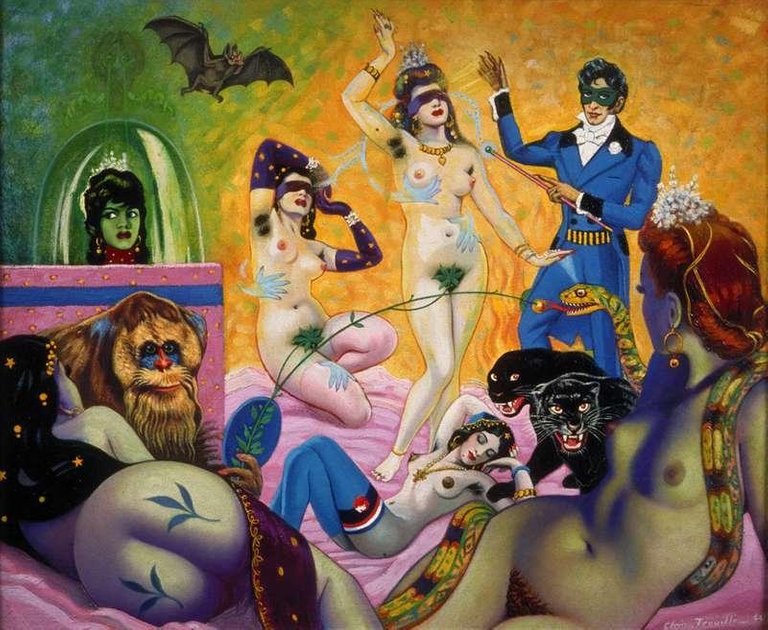
There are artists who never manage to be taken seriously. Because they don't deserve it, because they themselves don't, or because their daily life seems to relativize their status as artists. This is the case of Clovis Trouille, a surrealist painter who was born in the tiny village of La Fére, a French commune, located in the department of Aisne, in the region of Haute France, in 1889 and studied at the school of Fine Arts in neighboring Amiens. There he began to work as an advertising illustrator or collaborating with his drawings in the local press to settle definitively in Paris in 1920. In the capital he will work for the same company, Pierre Imans, which manufactures mannequins for shop windows or characters for fairground attractions. Trouille will be in charge of making up and decorating these figures, in most cases female.

Endowed with a good academic training, convinced that only figuration makes sense and a great lover of photography, Clovis Trouille uses these three parameters to compose his canvases, of a highly symbolic nature, always crossed by humor.
In them, he ridicules all powers - money, the military, politics, the Catholic Church - in compositions that are antecedents of narrative figuration and pop art. Regarding the first one, there is the desire to tell something, to put the characters in relation, to reflect on an event. Regarding the second movement, it anticipates the use of a whole popular iconography, as well as the use of serial reproduction techniques.

Trouille's work is openly erotic. The female nudes are not exercises in style but objects of desire. The obsession with women's buttocks and breasts, always made up in a dark red, refers to those mannequins Trouille lived on.
The scenes are varied: Jesus Christ has come down from the cross and walks laughing through the cathedral of Amiens; a train has derailed and that excites the libido of some Parisians; a pair of lovers kiss inside the church; a nun smokes revealing her daring corsetry; it rains medals on the dead of the First World War; André Breton tries to outwit the vigilance of the gendarmes controlling the artists' prison and, above all, Clovis Trouille stages his own death, either in the coffin and being fellated by a lady of whom we only see two whitish hemispheres, or in a procession in which all the living forces participate.

A good painter? He never pretended to be. Indeed, the very idea of worrying about the precision of the brushstroke or solving the problems of perspective seemed to him a waste of time. Trouille was a free and iconoclastic spirit whom a contemporary splendidly defined as "a Rousseau Customsman with eggs". And perhaps for that reason, because of his directness, his anti-intellectualism and his willful bad taste, Pope André Breton, the pope of ice cream, surrealism that had one of his paintings, never wanted to include him in any anthology of surrealist painting.
